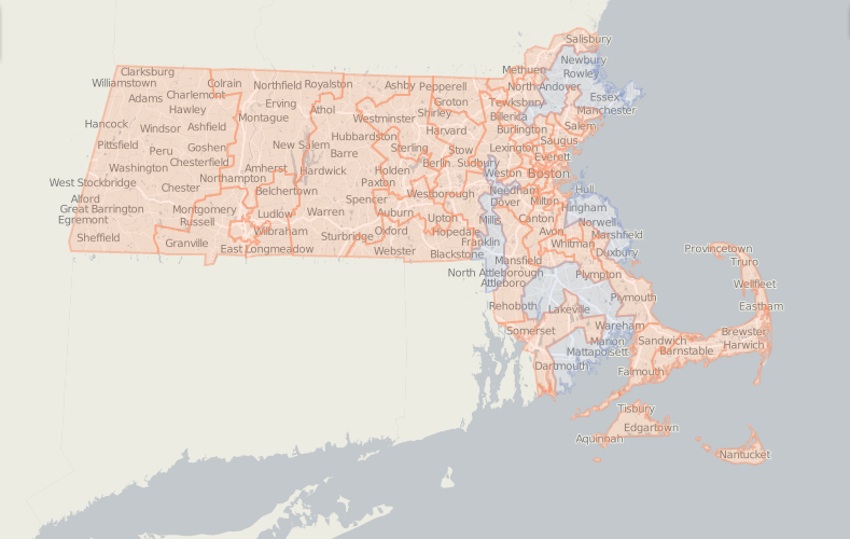Cambridge Company Creates Map to Show Which Officials Voted For ‘Tech Tax’
In July, when news broke that a lengthy Transportation Bill including a proposition to tack on a 6.25 percent “tech tax” for companies developing certain types of software was passed by the Massachusetts legislature, many entrepreneurs from the industry stepped forward and immediately called for a repeal.
But for Cambridge-based company Mapkin, which will soon launch an app, a repeal wasn’t enough. They wanted to know which elected officials were in favor of the so-called “tech tax,” and how they could contact those representatives to discuss the new law.
So, they did what they know how to do best: “We made a map,” according to a blog post by the company:
“Here at Mapkin we knew this could affect not only our small startup, but our friends, colleagues, virtual Twitter acquaintances … and just about every other software consultant and contractor in the Commonwealth. After speaking with so many people, it became clear that nobody (including ourselves) could answer the fundamental questions: ‘Who are my representatives? How did they vote? How do I contact them to express my concern or support?’”
The interactive map put together by the company, using blue and red coding, shows exactly which Senate and House leaders voted in favor or against the new tax. By scrolling over certain parts of the map, users can also learn which district an official oversees, and what their contact information on Beacon Hill is.
While a majority of representatives from both the House and Senate voted in favor of the tech tax, buried within the Transportation Bill, some have come forward after calls for a repeal and have sponsored legislation to roll back the vote come next session.
State Senator Karen Spilka, D-Ashland, filed a bill to repeal the recently enacted software services tax. Senator Richard Moore, D-Uxbridge, recently joined her brigade.
It’s exactly the type of message Mapkin is hoping to send. “See how the Senate and House voted. Zoom in to your own district and see the contact information for your representatives. See their vote. Let them know (politely!) whether or not you support their decision. After all, they work for you,” the company said on their website.
Jake Wasserman, an engineer at Mapkin, further explained their goal:
So, for starters, you guys haven’t officially launched your app yet. Can you tell me about the company?
We’re building a new kind of navigation product that allows you to create and share routes with a human touch. You can add the important details you’d mention when giving someone directions—a shortcut, a key landmark, where to park when you arrive. Our product creates a great looking map and a custom turn-by-turn navigation experience. It’s great for events like weddings and parties, helping people get to a your home or business, or guiding friends to a vacation destination.
Now, as for the “tech tax” map, what made Mapkin decide to build this?
After hearing about the law, we wanted to find out who our representatives are and how they voted. We were shocked at how difficult it can be to track down and piece together that information. Since we work with maps daily, it was easy for us to build a map to present this information in a more accessible way.
What has the reaction been from the tech community?
The new law has caused more confusion than anything. It’s extremely vague on what is and isn’t taxable. On any day, a software provider can be doing many things that are or aren’t taxable. Understanding all the nuances and tracking them is a huge burden.
What has the reaction been since people have viewed the map?
We’ve received great feedback so far. Most people couldn’t name their state senator or representative until they saw this map. They definitely couldn’t figure out how they voted on the law. Actually seeing how your representatives voted on an important issue brings it much closer to home.
Do you hope this sort of grabs the attention of some elected officials that voted in favor of the tech tax?
We hope that it causes more people to get involved. Educating voters and letting them know specifically who to contact and how is the real goal.
What do you think the chances are that this will be repealed?
It’s going to come down to voter engagement in the political process. One way to make a difference is calling and emailing your representatives. We hope the map helps people do just that.


